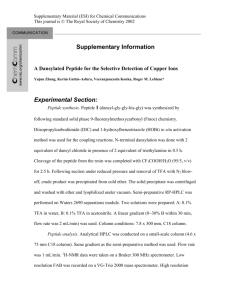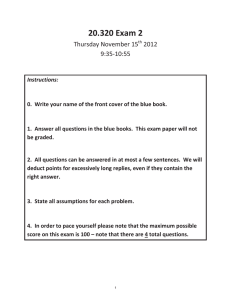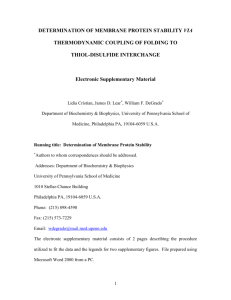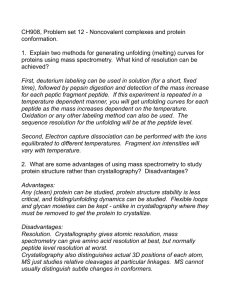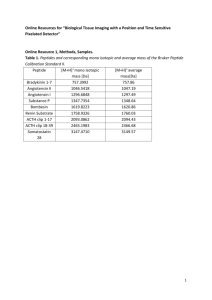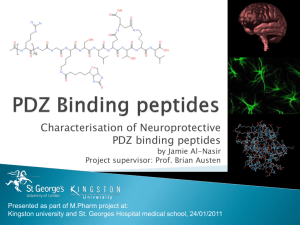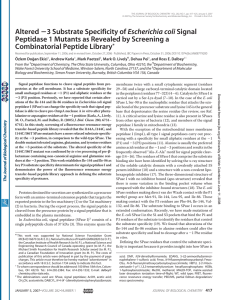Supplementary Figure Legends - Word file
advertisement
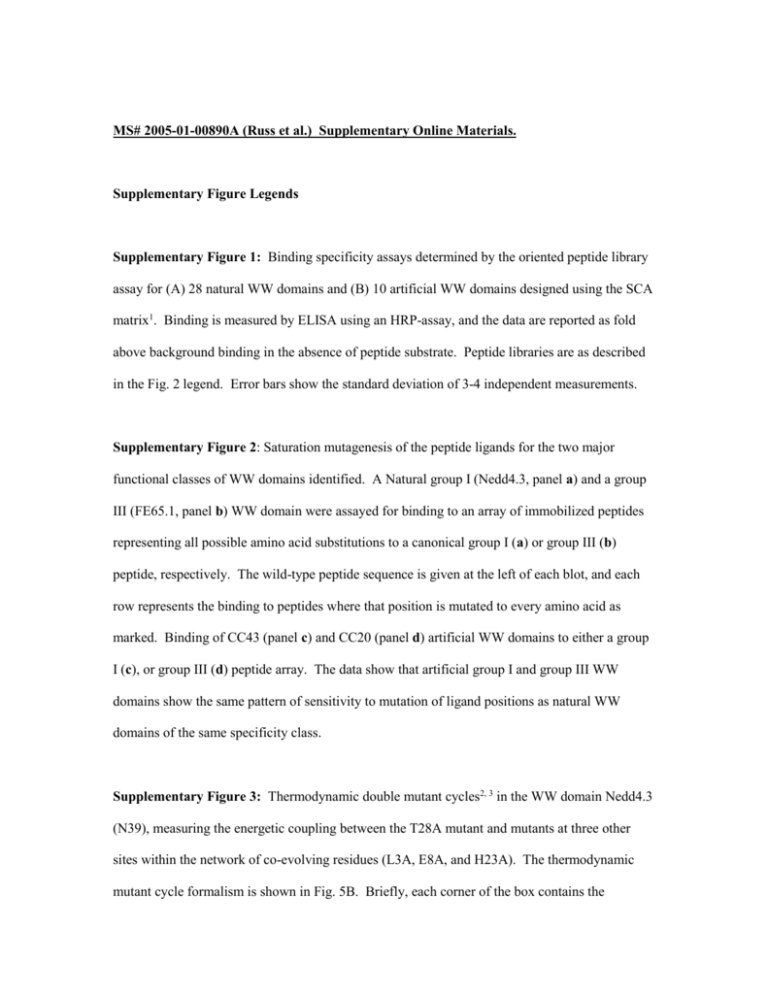
MS# 2005-01-00890A (Russ et al.) Supplementary Online Materials. Supplementary Figure Legends Supplementary Figure 1: Binding specificity assays determined by the oriented peptide library assay for (A) 28 natural WW domains and (B) 10 artificial WW domains designed using the SCA matrix1. Binding is measured by ELISA using an HRP-assay, and the data are reported as fold above background binding in the absence of peptide substrate. Peptide libraries are as described in the Fig. 2 legend. Error bars show the standard deviation of 3-4 independent measurements. Supplementary Figure 2: Saturation mutagenesis of the peptide ligands for the two major functional classes of WW domains identified. A Natural group I (Nedd4.3, panel a) and a group III (FE65.1, panel b) WW domain were assayed for binding to an array of immobilized peptides representing all possible amino acid substitutions to a canonical group I (a) or group III (b) peptide, respectively. The wild-type peptide sequence is given at the left of each blot, and each row represents the binding to peptides where that position is mutated to every amino acid as marked. Binding of CC43 (panel c) and CC20 (panel d) artificial WW domains to either a group I (c), or group III (d) peptide array. The data show that artificial group I and group III WW domains show the same pattern of sensitivity to mutation of ligand positions as natural WW domains of the same specificity class. Supplementary Figure 3: Thermodynamic double mutant cycles2, 3 in the WW domain Nedd4.3 (N39), measuring the energetic coupling between the T28A mutant and mutants at three other sites within the network of co-evolving residues (L3A, E8A, and H23A). The thermodynamic mutant cycle formalism is shown in Fig. 5B. Briefly, each corner of the box contains the equilibrium dissociation constant for a group I peptide (EYPPYPPPPYPSG) and either wild-type, single mutant, or double mutant WW proteins, measured through isothermal titration calorimetery. Values represent the mean and standard deviation of at least three measurements, reported in units of M. is the coupling parameter as described in the text. 1. 2. 3. Socolich, M. et al. Evolutionary information for specifying a protein fold. Nature, submitted (2005). Carter, P. J., Winter, G., Wilkinson, A. J. & Fersht, A. R. The use of double mutants to detect structural changes in the active site of the tyrosyl-tRNA synthetase (Bacillus stearothermophilus). Cell 38, 835-40. (1984). Hidalgo, P. & MacKinnon, R. Revealing the architecture of a K+ channel pore through mutant cycles with a peptide inhibitor. Science 268, 307-10. (1995).
